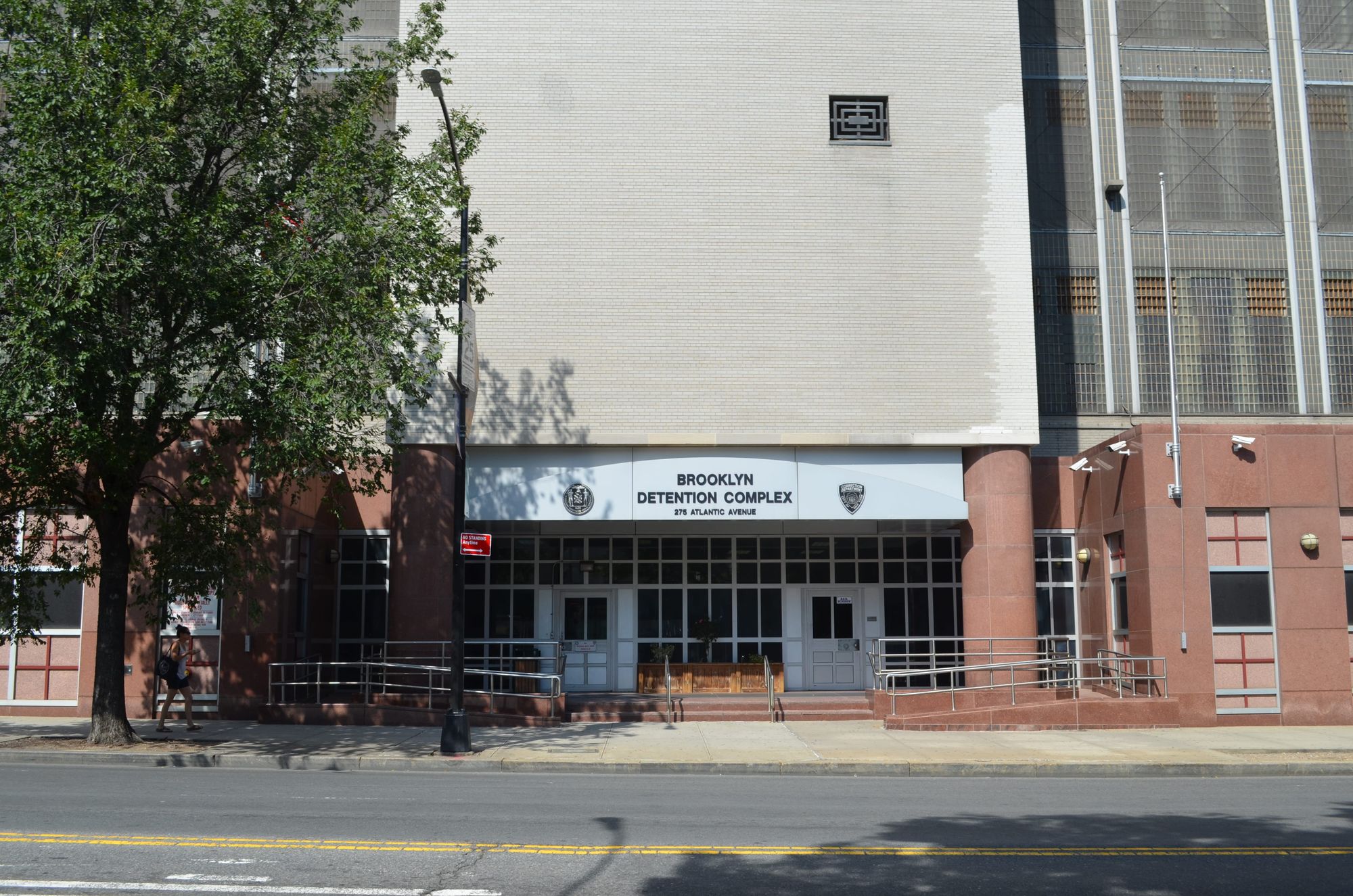CB2 Votes No On Brooklyn Jail Expansion

BOERUM HILL – On Wednesday night, Brooklyn Community Board 2 voted “no” on a land-use proposal which outlines plans for the jail to be expanded at 275 Atlantic Avenue. The vote was razor-thin with 17 board members voting no, 16 voting yes, two abstentions and one recusal. The close margin was surprising, as previously the CB2 land use committee voted 10 in favor, one opposed to the the City’s ULURP application for the Brooklyn Detention Center.

The change of heart may have been influenced by the raucous crowd which gathered Wednesday night, chanting “no new jails!” while discussions of the proposal took place. In the New York City College of Technology auditorium where the meeting was held, dozens of activists and residents showed up to protest the detention center, some with signs that read “Fund communities not jails,” and “Close Rikers now.”
Any discussion by the community board was interrupted by activists who were vehemently opposed to the borough-based jails, yelling “put the money into schools,” “jails are not healing,” and “this so-called community board does not represent the community.” The chairman of the meeting said that interruptions could result in people being escorted out of the meeting, which caused even more commotion.
The motion proposed by the land-use committee last month included a facility with 875 beds, far fewer than the 1,437 the city originally proposed. It also called to expand alternative sentencing programs and sustain youth programs which would provide the most impacted communities with educational and economic opportunities. It also proposed that a jail be developed in Staten Island. And to address one of the community’s biggest concerns—that the culture of Rikers Island will be brought to borough-based jails—the committee recommended additional training for officers.
The Brooklyn Detention Center is part of Mayor de Blasio’s larger plan to shut down Rikers by 2027 and build a more “modern and humane” borough-based jail system, opening detention centers in Brooklyn, the Bronx, Manhattan and Queens. The plan is supposed to reduce the inmate population from 7,800 to 5,000 (however some predict that without pre-trial detention, that number could be lowered further).
During the discussion, one community board member offered an amendment to the language of the recommendation, saying that instead of putting in a need for “expansion of alternative sentencing programs” it should read “support the establishment of more community courts.” The board agreed to the amendment.
Community board member Sam Johnson made a statement against the land-use recommendation, saying “if an institution is built 80 years ago or whatever and they can’t get it right then, they’re not going to get it right now.”
Another board member said she could not support the plan as the city’s numbers on inmates keep changing. The Mayor’s office announced earlier this week that by 2026, the city plans to only have 4,000 individuals incarcerated. Although this estimate indicates that the city would be ahead of schedule when it comes to reducing the population at Rikers, members of the board said they need finite numbers in order to make a decision.

One of the activist groups at the meeting, No New Jails, calls for the immediate shutdown of Rikers and for no more money to be put into jails. Their primary concern is that Mayor de Blasio’s plan has made no real promise to shut down Rikers but also intends to use city funds to build more cells.
Maya Jenkins, 23, an organizer with the group, feels that the outcome was positive but not perfect. “I am disheartened that it was only by one vote,” she says. “It shows that if folks hadn’t shown up, it may not have happened.”
However, after the vote when many activists had left the meeting, community board members circled back to the topic, some of them apprehensive about the decision.
One community board member expressed that she felt some people voted with their emotions about whether the jail system works rather than the land use. Other community board members felt like the board had squandered its opportunity to make a statement about the borough-based jail network. Brandon Holmes, an organizer from Close Rikers Now, made a statement about how the land-use proposal would have helped shut Rikers down, and he supports the borough-based jail system.
After the meeting came to a close, he discussed his point of view with a community board member who voted no. “I don’t want to see Rikers close,” the community board member told Holmes. “And the reason I don’t want to see Rikers closed is because there is such a thing as a criminal mind. You’ve got people out there among us who are criminals.”
Holmes responded by saying that he respected the board member but couldn’t listen to what he was saying “My father was stabbed in the neck [while] at Rikers for marijuana possession,” he said. “My cousin broke his forearm at Rikers because correction officers beat him because he was gang affiliated, so what has to happen is that conditions need to improve both for the staff that are there and for the people who are incarcerated, and that cannot happen on Rikers Island.”
Holmes added that organizations like No New Jails will say incremental reform is not the way, but if you shut down the 12 Rikers buildings and replace them with four, it will reduce the amount of beds drastically and, therefore, the city’s ability to incarcerate people. No New Jail activists say that this is just the beginning, and they’ll be going to community board meetings in every borough to protest the borough-based jail system.
The Community Board’s vote on the borough-based jail plan is purely advisory. Brooklyn Borough President Eric Adams has scheduled the next public hearing regarding the Brooklyn Detention Center for 6pm, Thursday, June 6 at Brooklyn Borough Hall.




